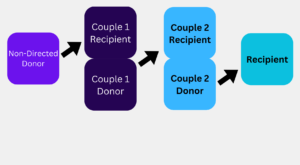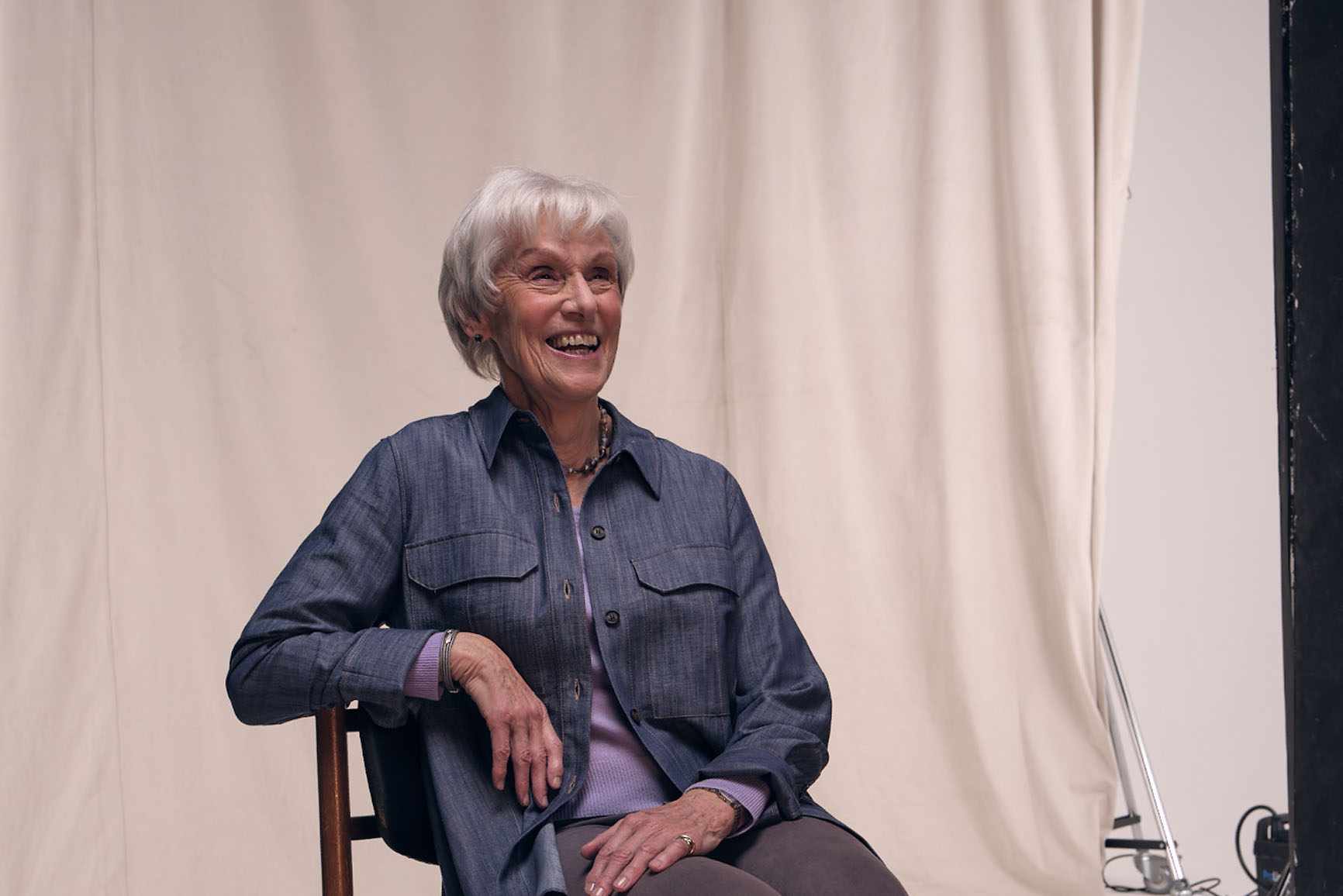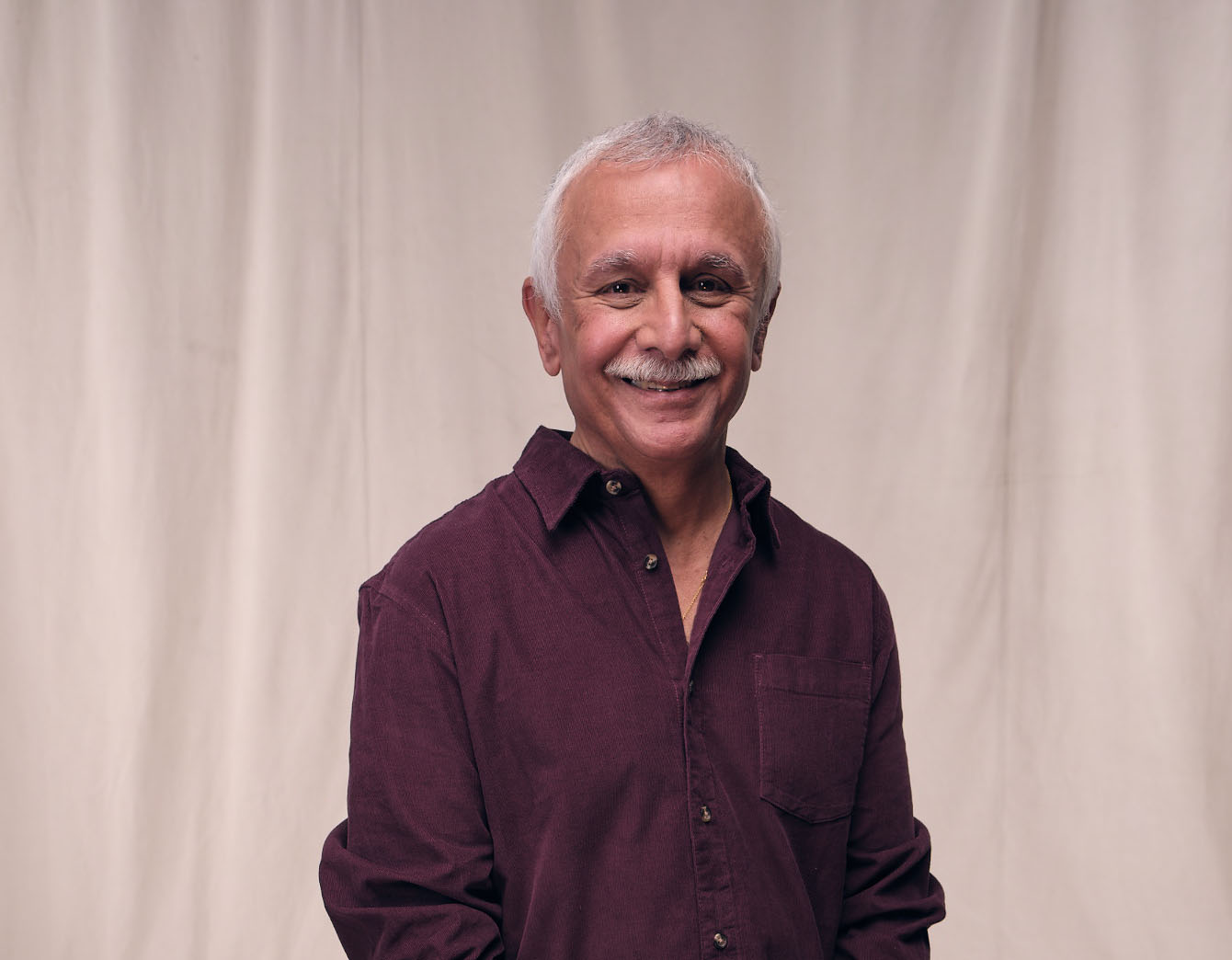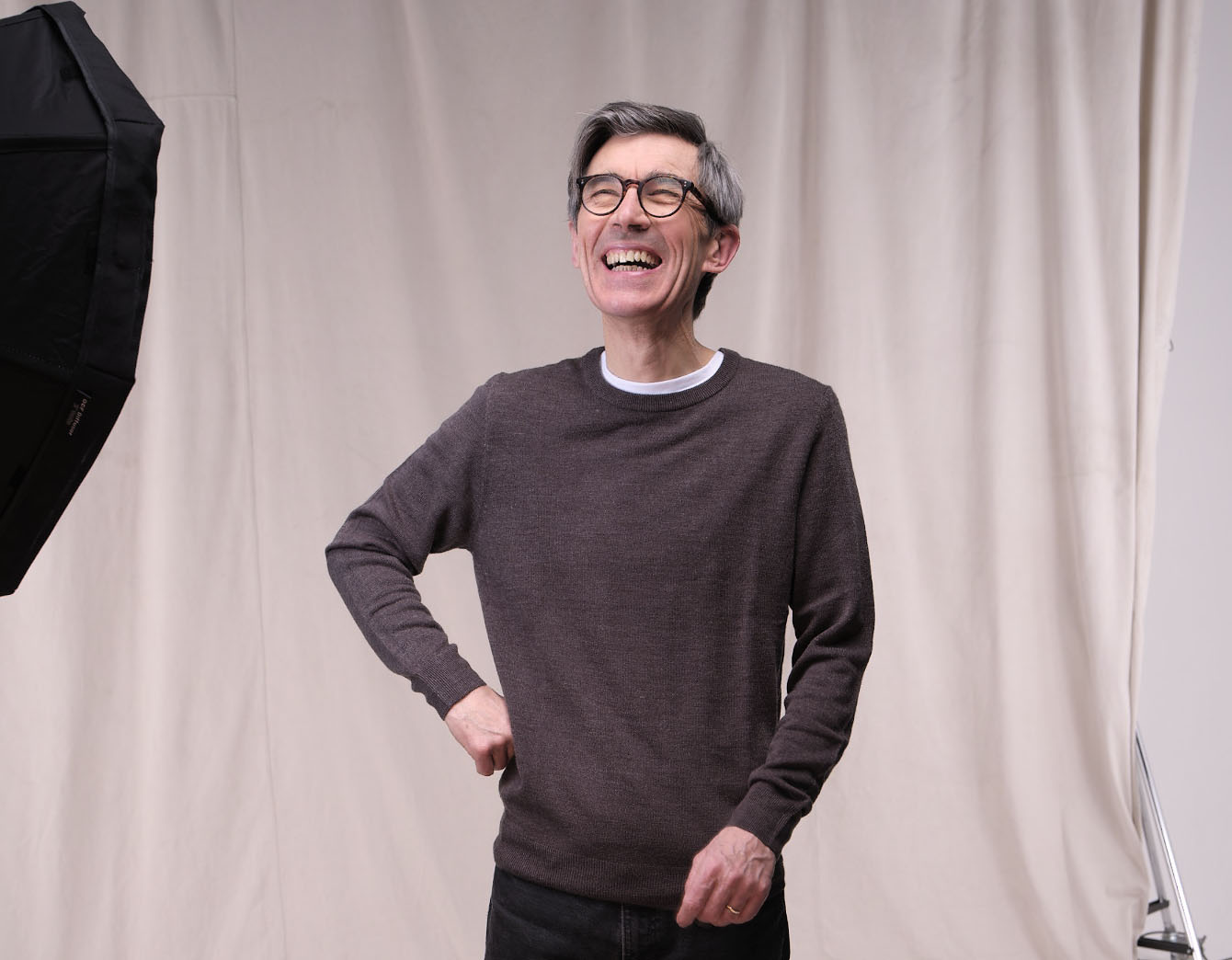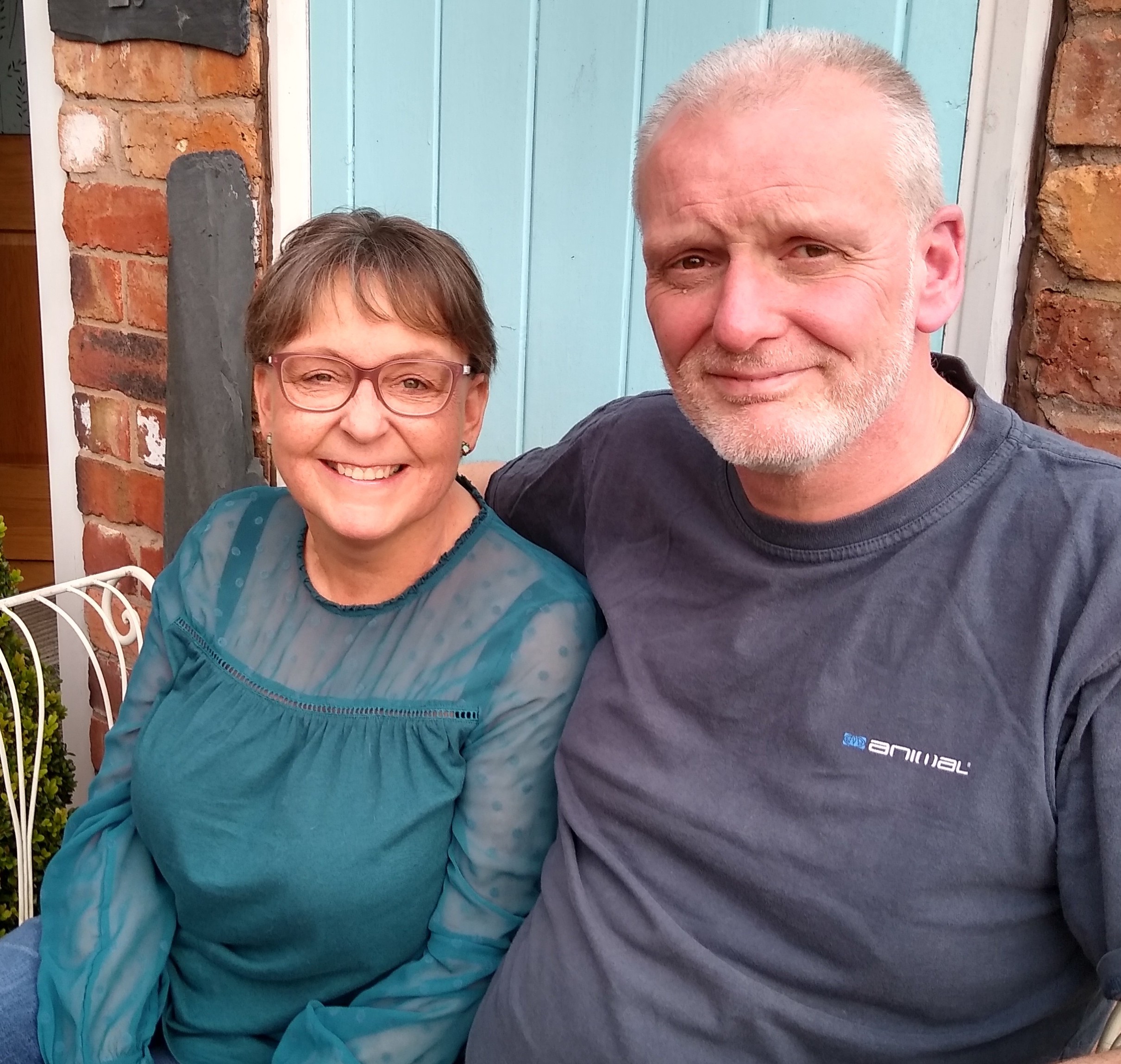Matching process for kidney donation
If your donation is directed:
If you are looking to donate a particular person (known as a ‘directed’ donation) then you will be asked to complete a number of medical tests to make sure you are able to donate and a suitable match for your recipient.
If you are not a match (for example if their blood type is different), your recipient may still be able to receive a kidney if you donate through something called the UK Living Kidney Sharing Scheme – as explained below.
If your donation is non-directed (altruistic):
If you are looking to donate to someone you don’t know (this is known as ‘non-directed’ or ‘altruistic’ donation), you will first be asked to do some medical tests to make sure you are fit and healthy enough to donate.
Once these are done, NHS Blood and Transplant then uses your test results to find the most suitable person to receive your kidney. This will either be a high-priority person on the waiting list, or it will be donated into the ‘UK Living Kidney Sharing Scheme’, which can result in up to three kidney transplants happening across the country.
WHAT IS THE UK LIVING KIDNEY SHARING SCHEME (UKLKSS)?
The sharing scheme involves two or more donor/recipient ‘couples’. One person in each couple is waiting for a kidney transplant, and the other wants to give a kidney to them but is not a good enough match. When this happens, the donor can volunteer to give a kidney to a couple in a similar situation, in return for a kidney which is more suitable for their couple.
This sharing scheme can happen between two ‘couples’, or it can involve more than two couples.
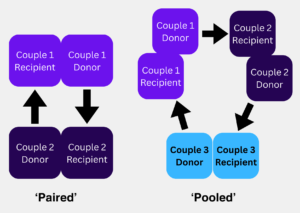
If a non-directed living donor offers to donate their kidney without being part of a couple, it can ‘trigger’ a donor chain with two or three people receiving a kidney, who may not otherwise find a suitable transplant. When this happens, a single living donor kidney can enable up to three transplants – helping three recipients waiting for a kidney.
